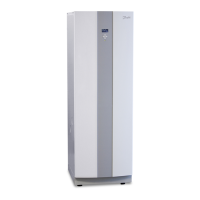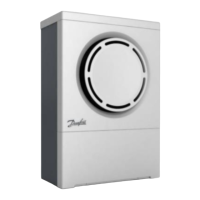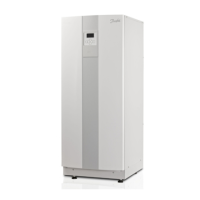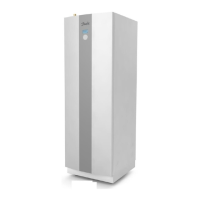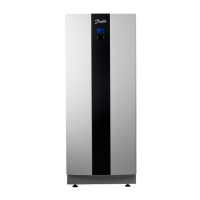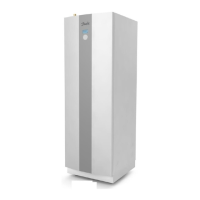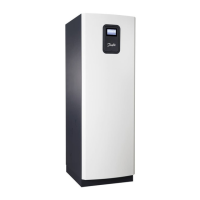Cause Troubleshooting Remedy
6. Defective compressor. Measurement check the voltage on the three
phases (each to zero) at the compressor.
Deviations from the average of the three val-
ues should not be more than 12% on any of
the phases. If measurement checking the wind-
ing’s impedance the same value must be on all
three windings.
If the compressor is defective, replace it.
Problem – Alarm sensor (all)
Cause Troubleshooting Remedy
Sensor fault alternatively cable fault. •Whenreadingtheresistanceofthesensors,
the sensor leads must first be disconnected
from the control equipment or terminal block.
•Firsttakeareadingfromthesensorincluding
cable and check against the ohm table in the
Measurement points section.
•Ifthereadoffvaluedoesnotcorrespondwith
the table, only measure the sensor and check
the ohm table in the Measurement points sec-
tion.
If the sensor gives a correct value, the
cable is defective.
If the sensor does not give a correct
value, the sensor is defective.
Problem – Incorrect phase sequence
Cause Troubleshooting Remedy
The incoming phases have the incorrect
sequence (only applies to 3-phase heat
pumps).
•IfthetextERRPHASESEQappearsinthe
display when the heat pump is powered, (only
appears in the first 10 minutes) this means that
the phases have the incorrect sequence.
•Whenthecompressorisrunning,checkthe
delivery pipe temperature by feeling the deliv-
ery pipe that should be hot (not just warm)
even a little distance from the compressor if the
phases are correctly sequenced.
•Whenthecompressorrunswiththephases
incorrectly sequenced a strange noise may be
heard (loud, rattling) when the compressor runs
backwards.
If the phases are in the incorrect order,
switch two incoming phases at the main
terminal block and recheck according to
the troubleshooting window.
Problem – Alarm TS (addition)
Cause Troubleshooting Remedy
1. The overheating protection has tripped. Check if the overheating protection has tripped. If the overheating protection has
tripped, reset it.
2. Phase drop.
The alarm occurs when 230 V is not regis-
tered between L2 on the circuit board and
N (220).
•Checkiftheoverheatingprotectionhastripped.
•Checkifanycablesatthecircuitboardorover-
heating protection are loose or damaged.
If the overheating protection has
tripped, reset it.
If the cables are loose/damaged, secure
or replace them.
3. Overheating protection fault, cannot be
reset.
Press the reset button, measurement check for
230 V on the incoming and outgoing connec-
tions.
If the overheating protection is defec-
tive, replace it.
4. Flow sensor fault. Check what the flow sensor shows, is it a plau-
sible/actual value?
Measure the resistance of the sensor, check
against the ohm table in the Measurement
points section.
If the sensor is defective, replace it.

